A pair of 'Cachemire' octagonal baluster ribbed vases with covers.
Vraag
Hello,
I'd like to hear the opinions on this lovely pair. Both are signed with LVE marks that suggests Lambertus van Eenhoorn. One of them is fully glazed underneath on the base, the other one is not. Also one of them seems bit lighter, the body colour is whiter compared to the other one being more creamier.
My humble and very polite request for your views and comments, please: do you think they are genuine pieces made by the famous Dutch maker?
Best regards,
Adrian
Afmetingen
H: 49cm
Collectie
publiekscollectie
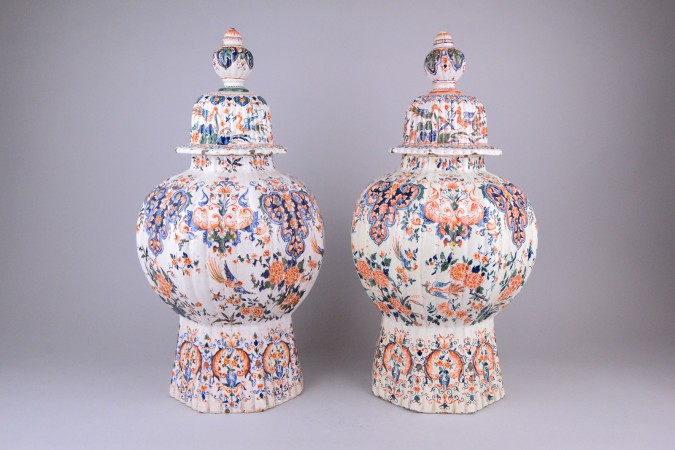
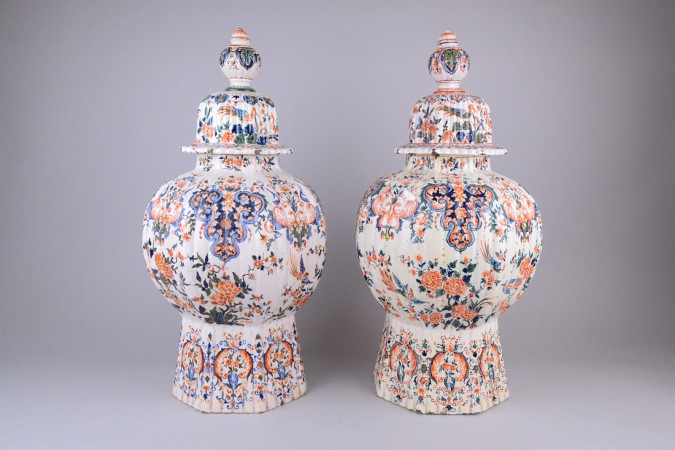
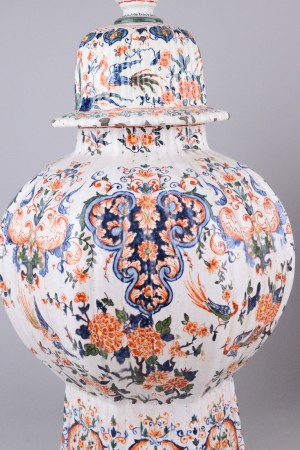
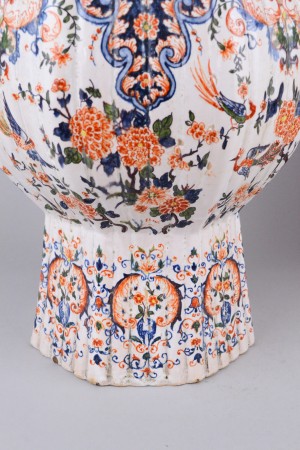
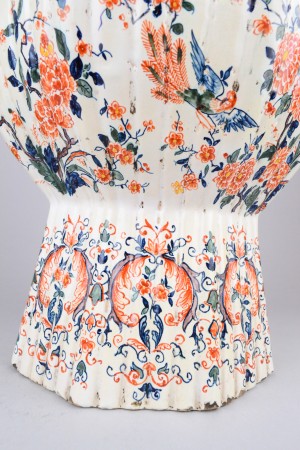
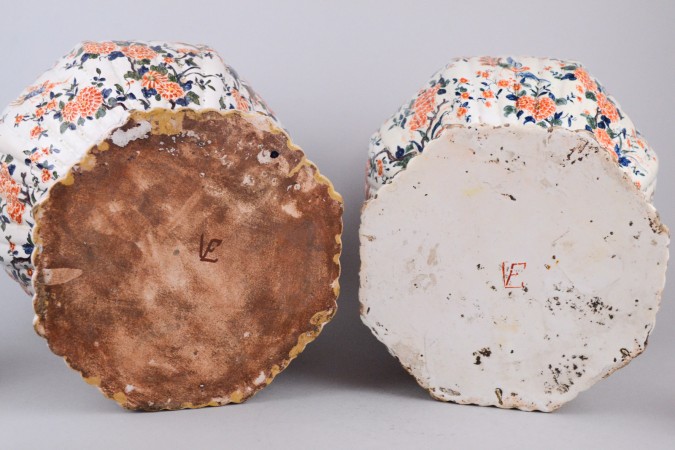
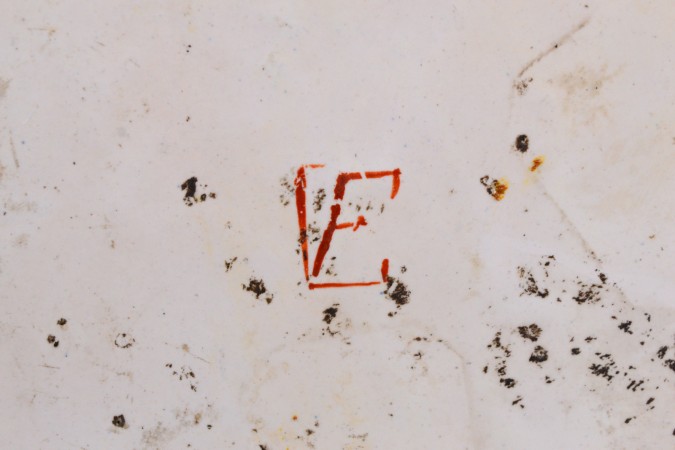
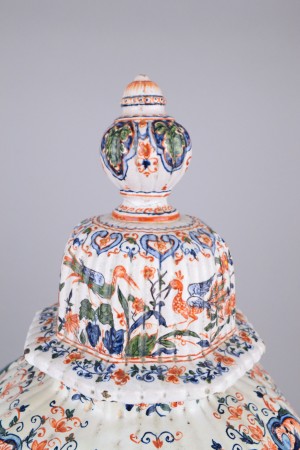
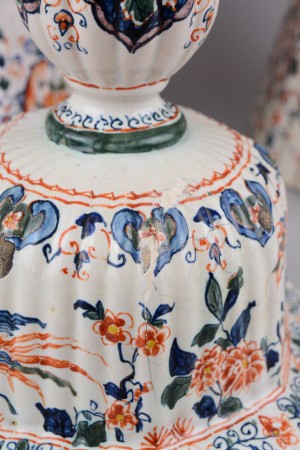
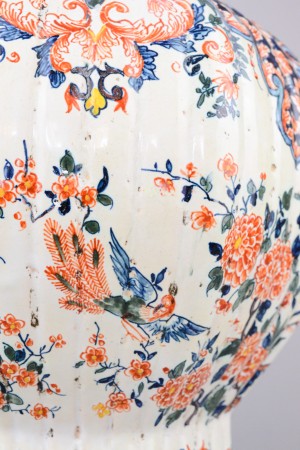
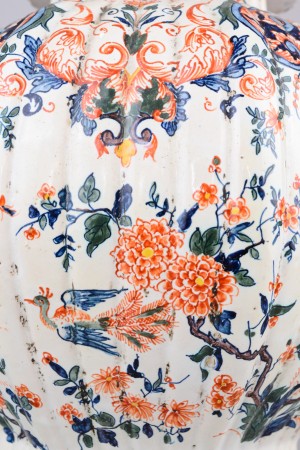
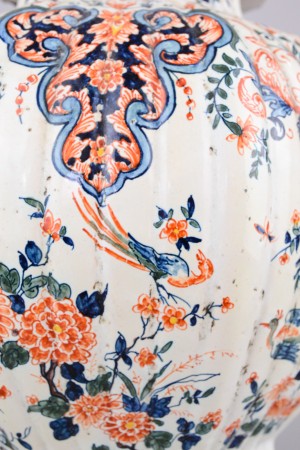










Reacties 10
In my opinion these are genuine pieces made by LVE .
Kind regards,
In reply to In my opinion these are… by R.L.A. Maes844
Hello,
Thank you very much for your opinion, it is much appreciated.
I do also think this pair is genuine. Everything about them looks and feels real. Even just the feel of the glaze and the paste, in hands they truly feel genuine - very smooth and very fragile. Decorations are stunning and they do look absolutely correct for the period.
On the completely another note - my apologies for the quality of the photos, original ones are really good, I don't know why they look so blurry after uploading them online.
Thank you one more time and have a great weekend!
Best regards,
Adrian
In reply to Hello, Thank you very much… by Adi
Hello Adrian,
If you would like to add a photo to a reply than they come out in much better quality for some reason.
In reply to Hello Adrian, If you would… by PatrickW487
Hi Patrick,
Got it. It must be something to do with the website built-in script for converting jpg files uploaded by users, possibly to avoid the server being bombarded with large files. Mine were previously converted in Adobe Camera Raw to keep the quality and to lower the size. I will try and upload here two of the same files again as a test run, so next time I will do it your way. Thank you, Patrick!
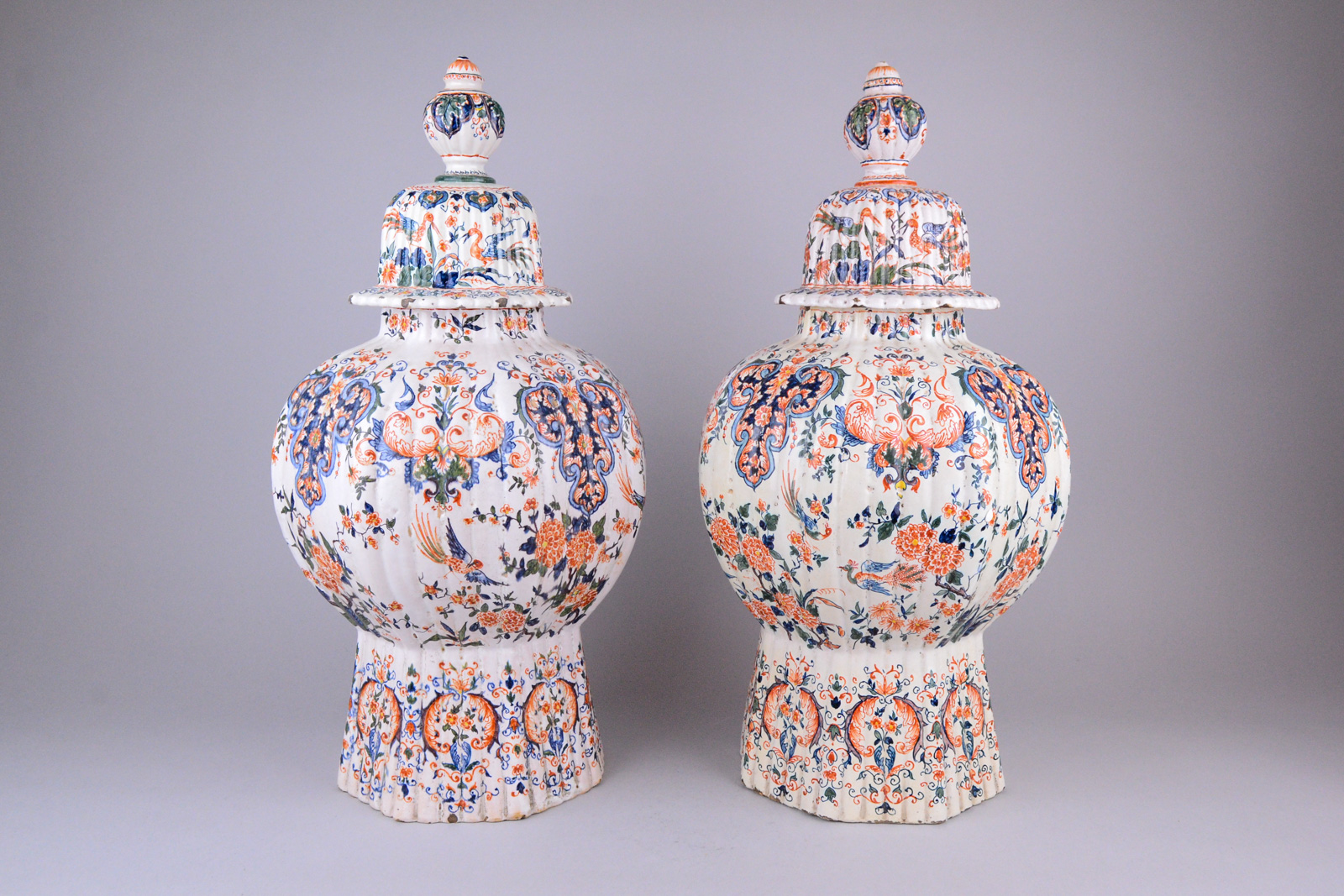
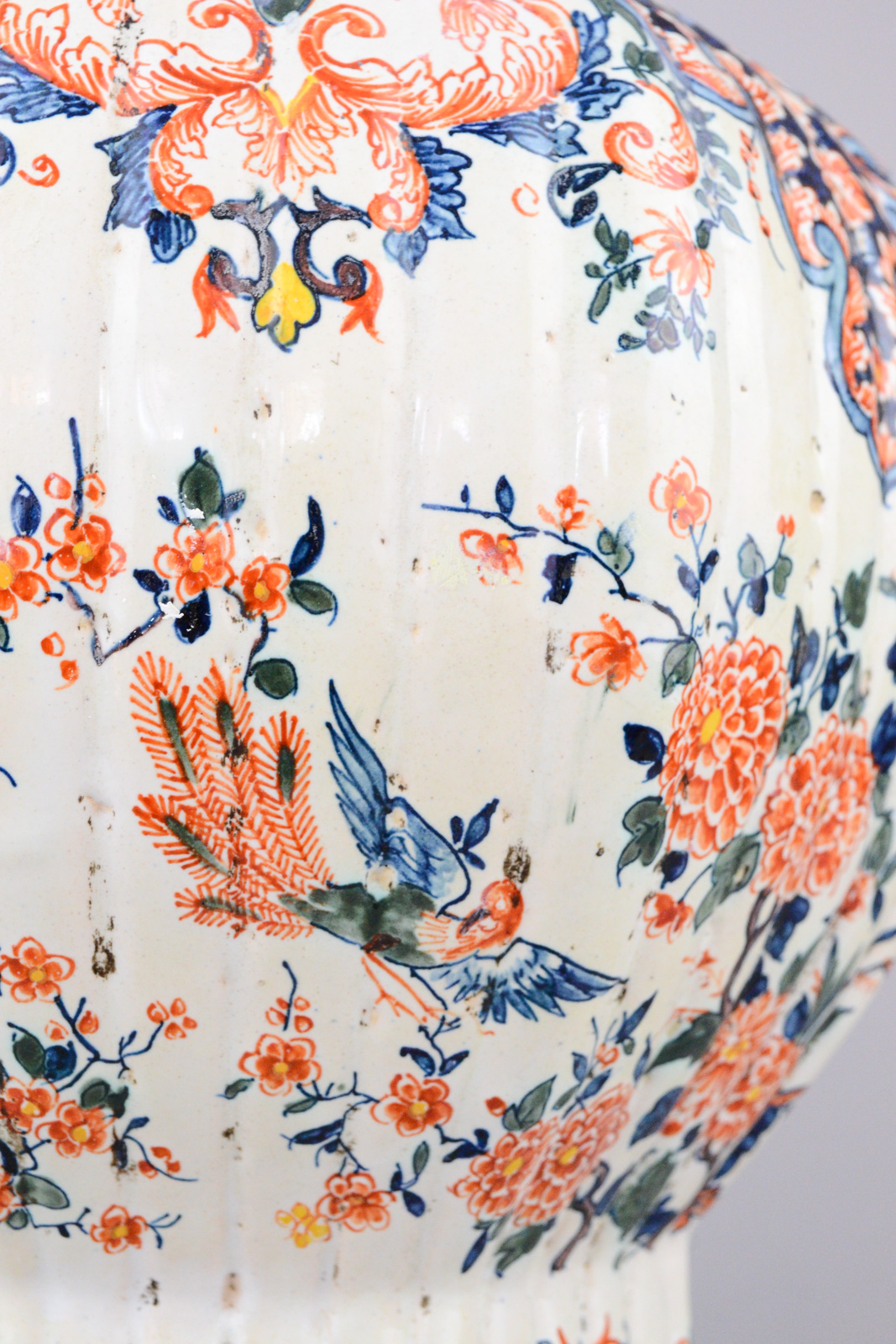
Verdict:
Analysis:
Unfortunately, these are not originals. The model initially raised concerns, but upon examining the details—thank you for sharing so many images—my first impressions were confirmed. The marks also appear rather ‘harshly’ drawn, which likely indicates they are intentional later imitations. While one can only make an educated guess, they were probably produced in northern France around 1900, during the peak of production in that region. You can find more information about an exhibition on various factories here.
In reply to Unfortunately, these are not… by Robert Aronson
Dear Robert,
Thank you very much for sharing your thoughts. Respectfully, I'd like to share a different view. I must admit that I have not seen that type of style on anything exceeding 18th C and definitely not on anything from around the 1900s. Regarding the close-ups, please take a look at the below. Pardon the oversaturated photo of mine, the camera settings were unfortunate. On the right there's a genuine piece from the collection of V&A. I am sorry but I have never seen anything like that on as I said anything latter than the 18th C and to be more precise, later than 1st half of the 18th C. I totally respect your opinion and of course I would appreciate some examples of the mentioned LVE's copies from the northern France dating from the 1900 - just for the educational purposes of course.
Kind regards,
Adrian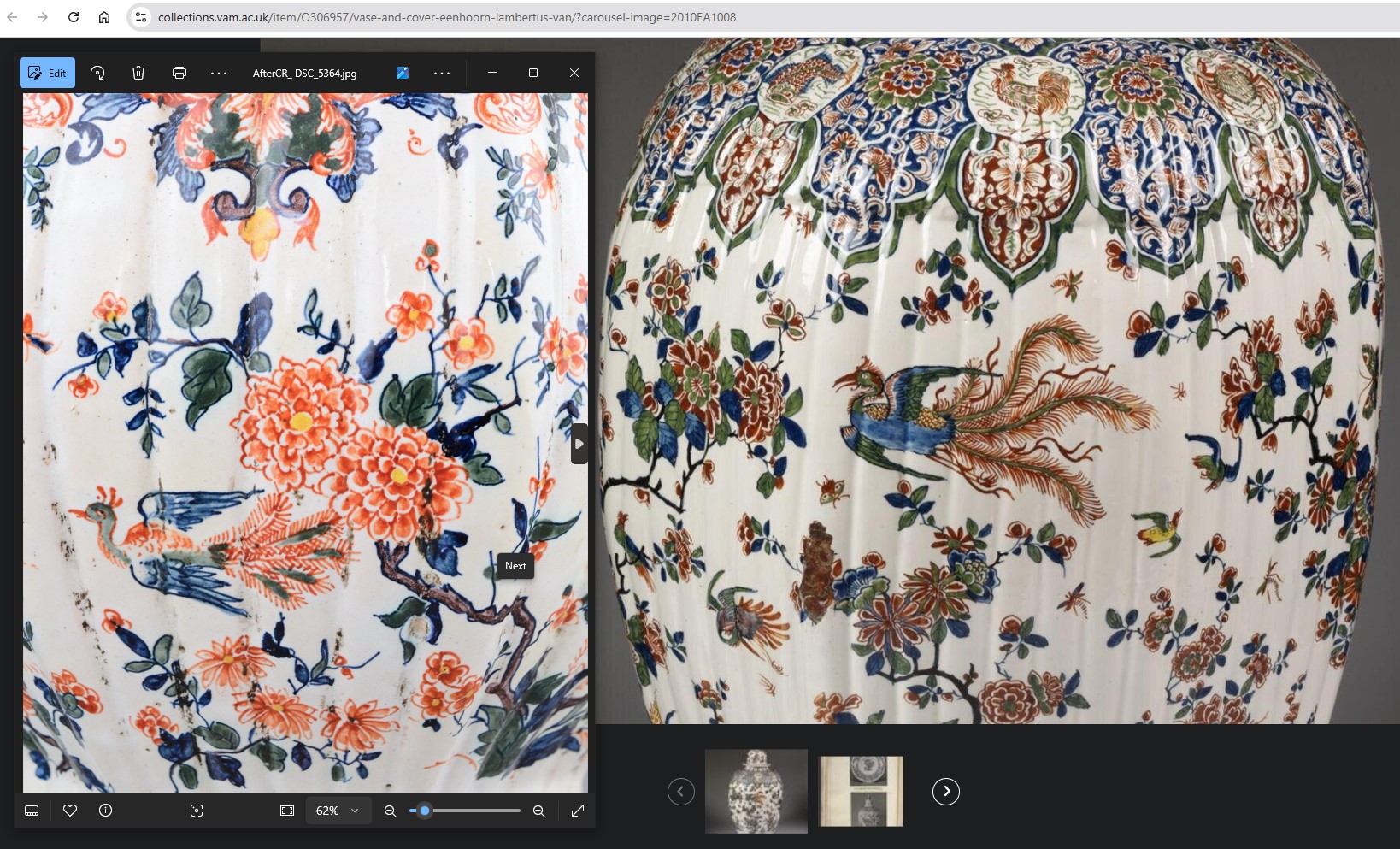
In reply to Dear Robert, Thank you very… by Adi
Big difference in painting, especially see the veins in the leaves, note the tail of the bird, greetings jvdh.
Groot verschil in schilderen, zie vooral de nerven in de bladeren, let op staart van vogel, groet jvdh.
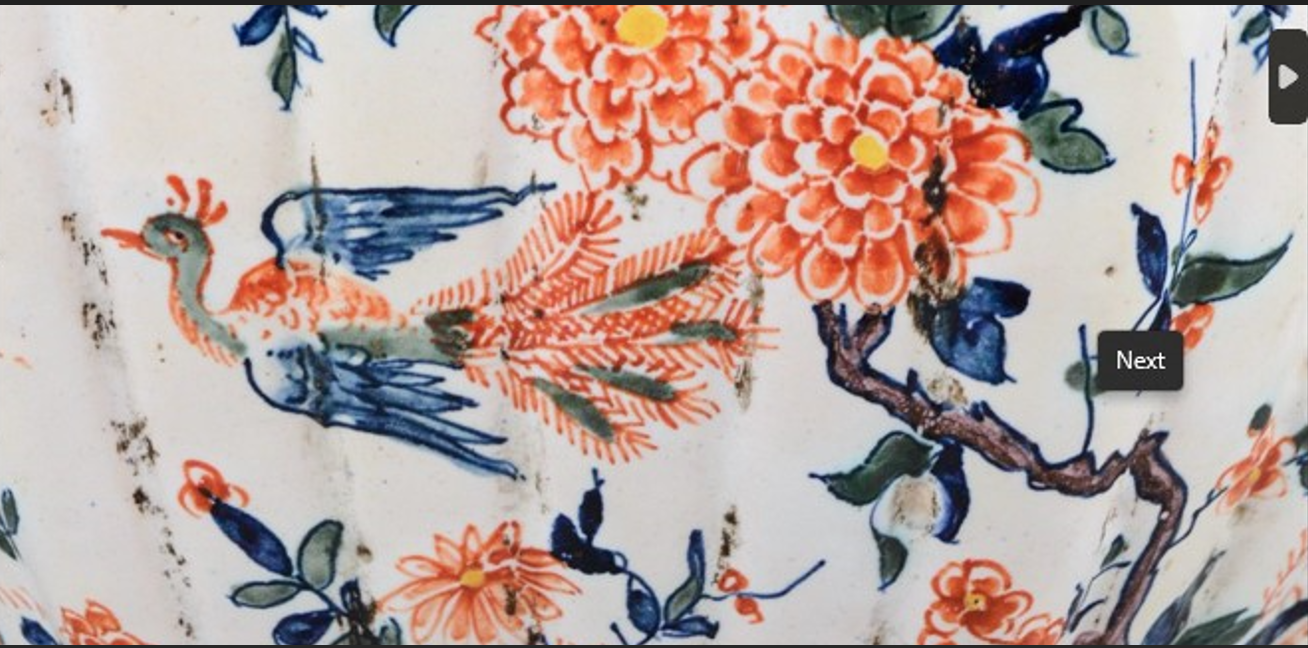
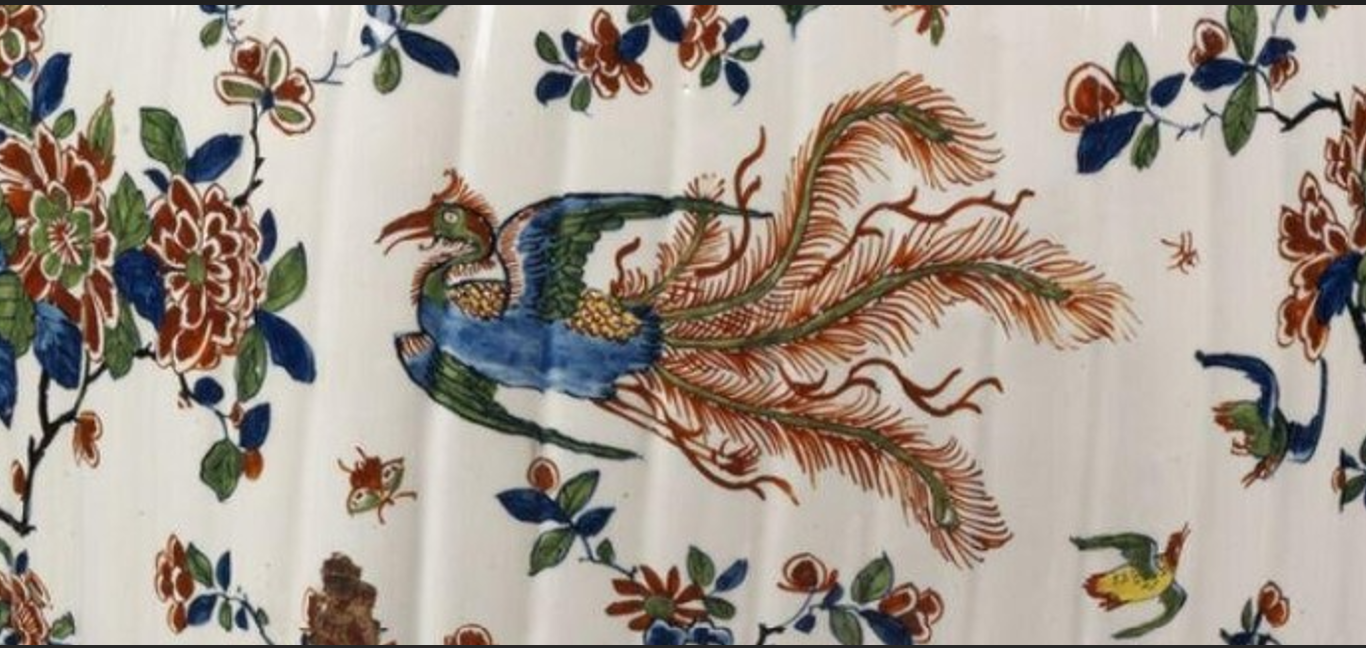
In reply to Dear Robert, Thank you very… by Adi
Thank you for your response. While I appreciate your perspective, I have no doubt that these are not originals, nor do I question the dating. The key points of distinction lie in the coloration, decoration, shape (model), and the execution of the marks, all of which differ significantly from authentic 18th-century Delftware.
Regarding the production origin, the type of imitation seen here is consistent with pieces made in northern France around 1900. I have attached an image taken at the museum in Desvres, which houses examples of such imitations in the same color palette. These later copies often replicated Delft forms but differ in execution upon closer examination.
Best regards,
Robert
In reply to Dear Adrian, Thank you for… by Robert Aronson
Dear Robert,
Thank you so much for your professional opinion, I totally respect and accept it, you're absolutely right. I find it amazing you're willing to share your knowledge and assist with correct identification. Very educational experience and I appreciate it a lot. The subject is fascinating to study and to improve the quality of the collection.
Thank you one more time!
Kind regards,
Adrian
Add new comment
Only logged in users can post comments
Log in or register to post comments